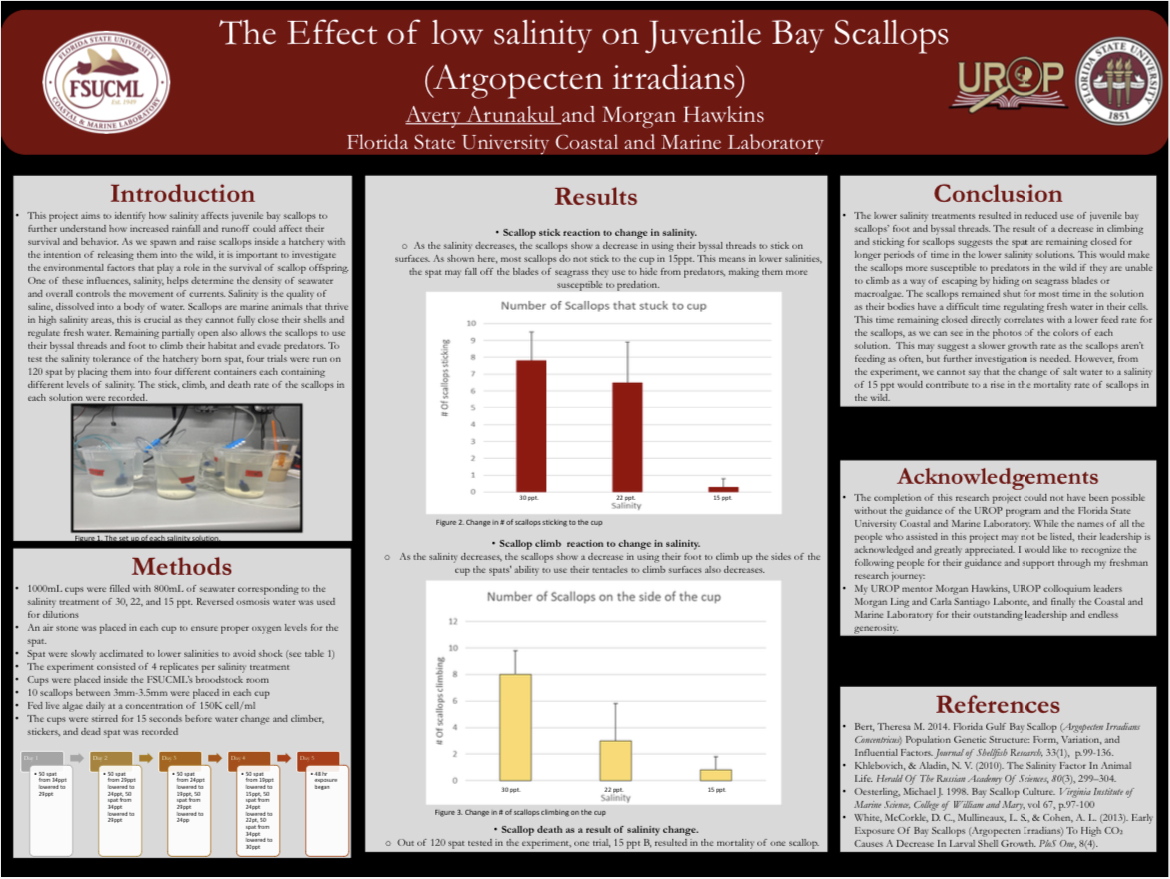Research Symposium
23rd annual Undergraduate Research Symposium, April 6, 2023
Avery Arunakul Poster Session 2: 1:30 pm - 2:30 pm/ Poster #61

BIO
My name is Avery Arunakul, and I am from Marianna, FL. As a freshman here at Florida State University I am pursuing a dual degree in exercise physiology and psychology. My goal is to attend medical school in four years with the hopes of specializing in dermatology. I chose to participate in a research project outside of my majors to explore my other interest, such as helping animals. The time I spent at Florida State University’s Coastal and Marine Laboratory has allowed me to broaden my horizons while participating in hands-on fieldwork. It has also granted me the opportunity to learn more about the marine life within Apalachicola Bay and the care that goes into restoring the dwindling populations.
The Effect of low salinity on Juvenile Bay Scallops (Argopecten irradians)
Authors: Avery Arunakul, Morgan HawkinsStudent Major: Exercise Physiology, Psychology
Mentor: Morgan Hawkins
Mentor's Department: Biology Mentor's College: College of Health and Human Sciences Co-Presenters:
Abstract
This project aims to identify how salinity affects juvenile bay scallops to further understand how increased rainfall and runoff could affect their survival and behavior. As we spawn and raise scallops inside a hatchery with the intention of releasing them into the wild, it is important to investigate environmental factors that play a role in the survival of scallop offspring. One of these influences, salinity, determines the density of seawater and controls the movement of currents. Salinity is the quality of saline, dissolved into a body of water. Scallops are marine animals that thrive in high salinity areas, this is crucial as they cannot fully close their shells and regulate fresh water. Remaining partially open also allows the scallops to use their byssal threads and foot to climb their habitat and evade predators. To test the salinity tolerance of the hatchery-born spat, four trials were run on 120 spat by placing them into four different containers each containing different levels of salinity. The stick, climb, and death rates of the scallops in each solution were recorded. The lower salinity treatments resulted in reduced use of juvenile bay scallops’ foot and byssal threads. The result of a decrease in climbing and sticking for scallops suggests the spat remaining closed for longer periods of time in the lower salinity solutions. This would make the scallops more susceptible to predators in the wild if they are unable to climb as a way of escaping by hiding on seagrass blades or macroalgae.
Keywords: biology, scallops, restoration, marine, salinity


